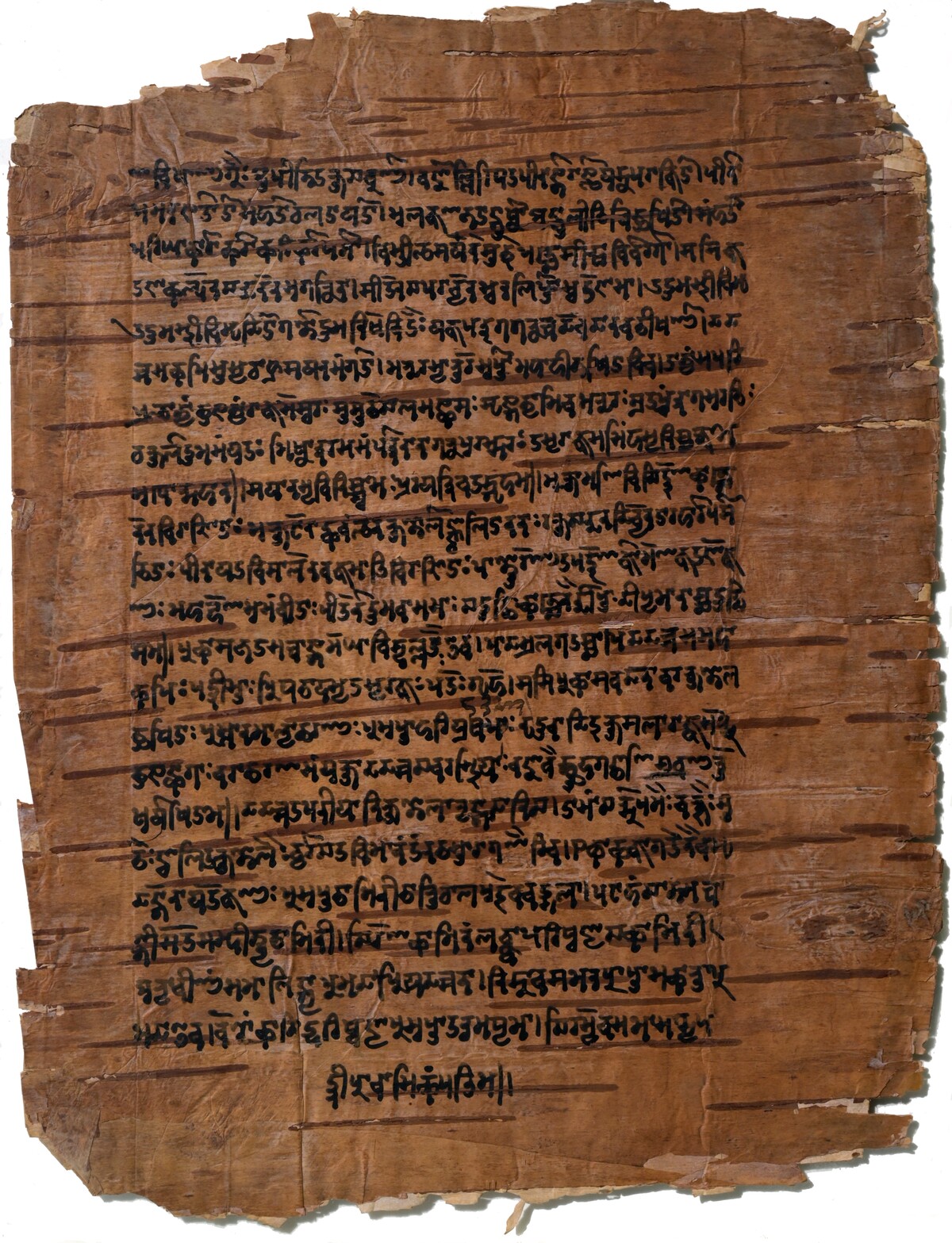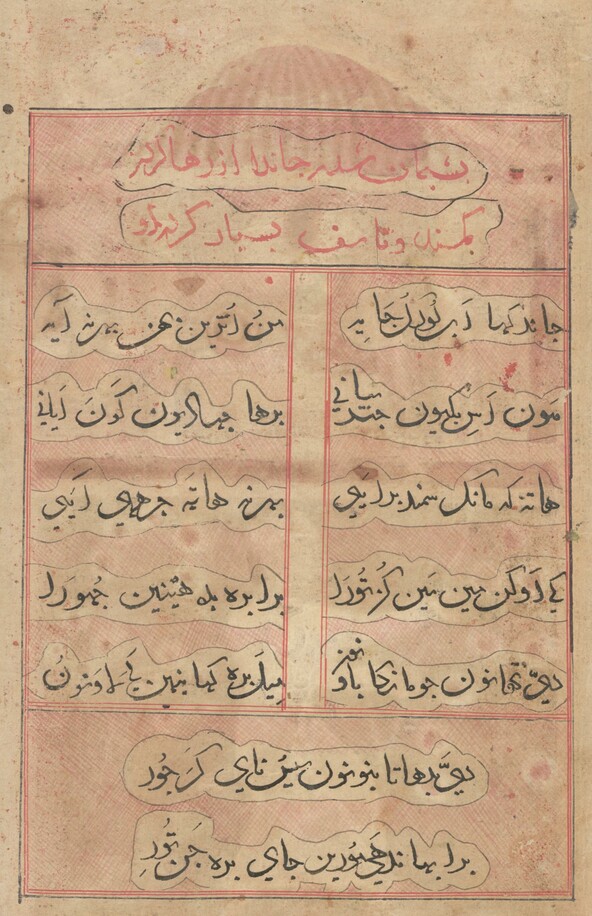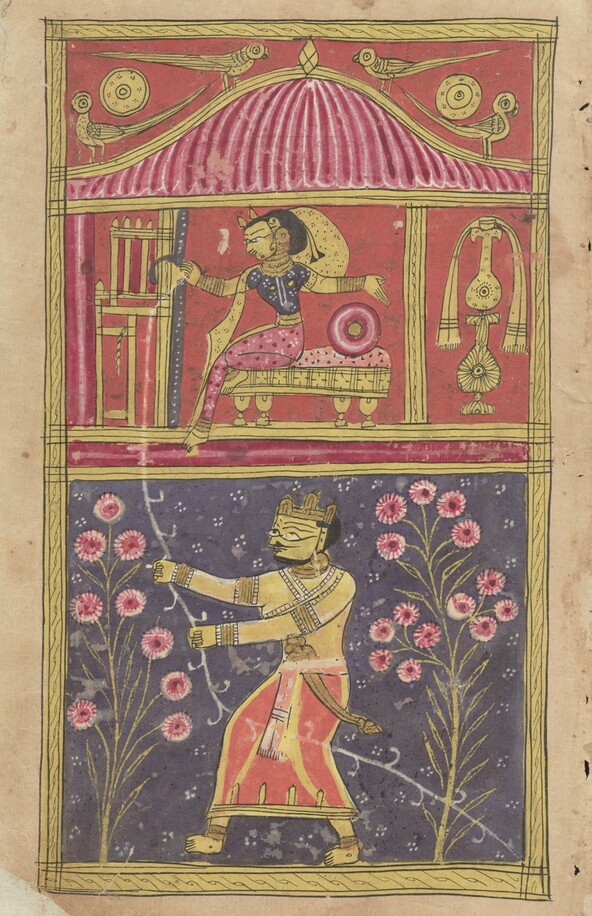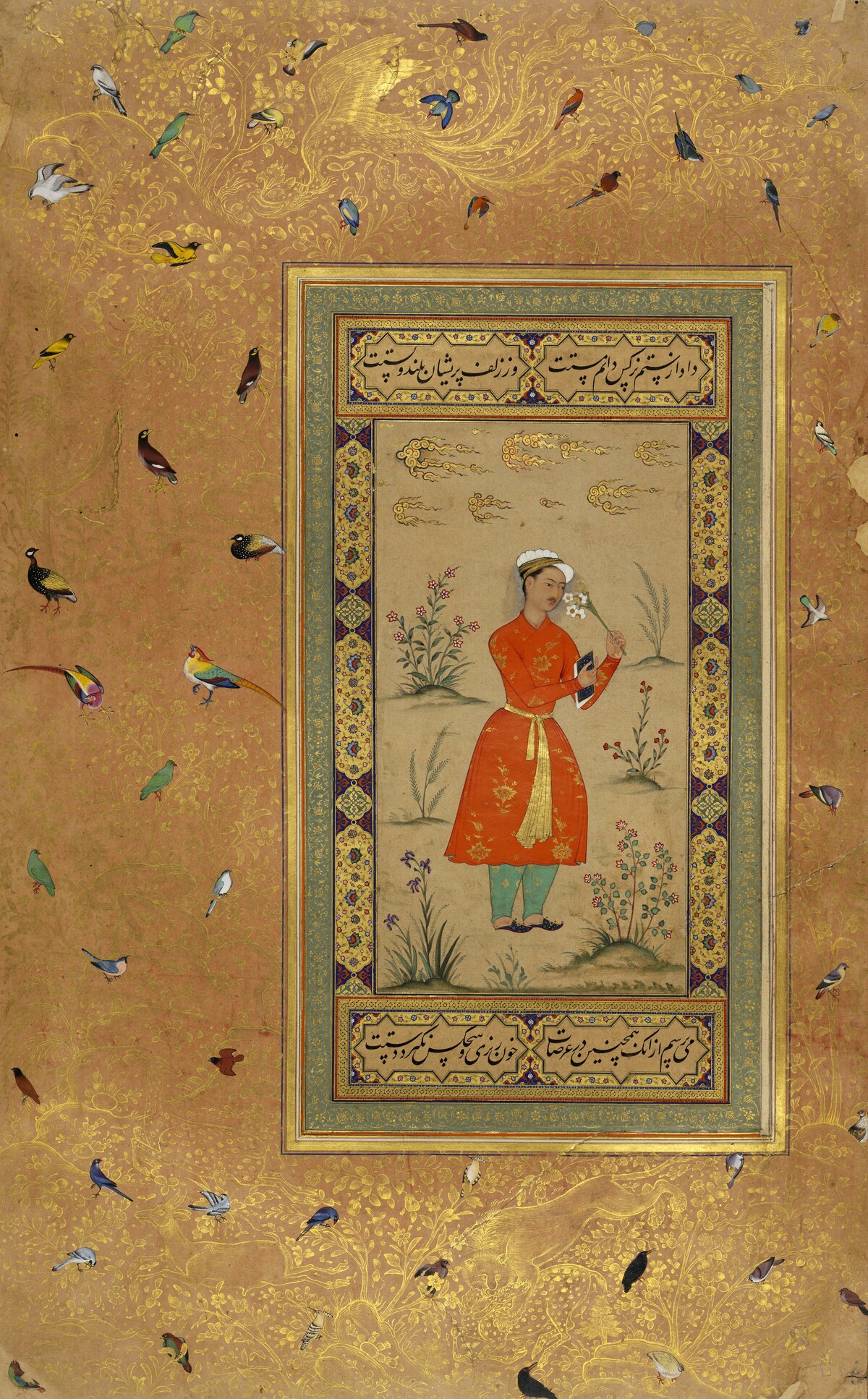Orient
South Asian Manuscripts
The Oriental Department manages about 10,000 manuscripts in South Asian languages and scripts on various writing materials, whereby the Sanskrit and Prakrit manuscripts of North Indian origin clearly predominate on paper. They are mostly written in Devanāgarī. Another focus of the collection is the nearly 2000 manuscripts in the Kashmiri Śāradā script.
Manuscripts from South Asia reached Berlin relatively late and initially only sparsely. After all, a catalogue of manuscripts in the Electoral Library compiled in 1668 and continued until about 1700 mentions two Malabar manuscripts (Tamil) among the 100 existing oriental manuscripts, which, however, could not yet be assigned to any objects.
However, the earliest demonstrable acquisitions of the still existing collection were two palm leaf manuscripts in Tamil (Ms. or. fol. 150 and 151), which Alexander von Humboldt had bought in Paris in 1823. From 1827 to 1834, 31 Sanskrit manuscripts were added.
The Royal Library made its first extensive acquisition in 1842 with the purchase of the collection of Sir Robert Chambers, which he had assembled during his time as judge in Calcutta from 1774 to 1799. It contains works from all areas of Sanskrit literature, with Vedic literature being particularly well represented. As early as 1853, a catalogue was published with descriptions of the 844 manuscripts of the Chambers collection and the 56 other Sanskrit manuscripts acquired up to 1852. Albrecht Weber's catalogue of Sanskrit manuscripts was a pioneering achievement not only in the field of Indology. This catalogue was also the first volume in the series of manuscript catalogues of the Royal Library of Berlin. Among the Indian manuscripts, only the Chambers Collection has received separate shelf-numbers.
The library acquired a considerable number of 253 Jaina manuscripts in 1873–78 through the mediation of Georg Bühler, who was a member of the Educational Department of the Bombay Presidency from 1863 to 1880. Subsequently, the collection, which was created specifically for research, was systematically expanded. Not only texts in Sanskrit and Prakrit, but also those in Early Modern Gujarati and Hindi were acquired in large numbers. As early as 1898, the Berlin collection comprised more than 1,000 Jaina manuscripts. Later it was supplemented by some individual acquisitions. Today it is one of the most important of its kind in Europe.
An extensive collection of South Indian palm leaf manuscripts was first added in 1919. The sales catalogue No. 403 (1911) compiled by Indian scholars under the direction of Friedrich Otto Schrader by the previous owner Karl W. Hiersemann in Leipzig lists 681 manuscripts, of which 642 were acquired. It was also Schrader who assembled the collection in India in 1911. Another large closed group was acquired with the 494 palm leaf manuscripts of the Janert collection. Together with the individual acquisitions and the more than 200 existing Sinhalese manuscripts, there are more than 1500 South Asian palm leaf manuscripts in the collection. Many of them, unfortunately, are in poor condition.
The purchase of the collection of the Indologist Klaus Ludwig Janert in 1996 was the largest acquisition of South Asian manuscripts after the Second World War. The origin of the approximately 2400 manuscripts extends from Kashmir in the north to South India. Its value lies in the diversity of literature, languages and scripts represented. Scientifically significant are above all the manuscripts from the field of Kashmiri Shaivism and Vedic literature. Since the South Indian manuscripts of the Janert Collection were written on palm leaf and the Kashmiri manuscripts partly on birch bark, they are particularly suitable for palaeographic studies.
It is not possible here to go into the many acquisitions on a smaller scale, which have enriched our collection in the past two centuries not only in their number, but also in their diversity. Further information can be found in the printed catalogues, especially those of Albrecht Weber.
The Sanskrit manuscripts of the Staatsbibliothek zu Berlin are almost completely catalogued, at least by means of short entries. For Dravidian manuscripts not yet catalogued, Part 14 of the VOHD, Vol. 2: Indian manuscripts was originally planned. This volume has not been published. Like the Sanskrit manuscripts, the Dravidian manuscripts have been recorded in the database "KOHD Digital" since 2016. Also not published is the originally planned Part 3 of the VOHD ; Vol. 22: Singhalesische Handschriften.
The Oriental Department also preserves the materials of the "Nepal German Manuscript Preservation Project" (NGMPP), in the course of which about 180,000 manuscripts and 60,000 historical documents were filmed. These include 9136 microroll films (black and white), 713 slide films, approx. 2000 framed colour slides and the corresponding handwritten catalogue cards. Online catalogues were created at the University of Hamburg as part of the "Nepalese-German Manuscript Cataloguing Project" (NGMCP).
![Ms. or. fol. 1708, Sheet [49r] = 48r of the original pagination, Bad draught oxen and undisciplined monks](/fileadmin/_processed_/6/d/csm_Ms.or.fol_1708_Ochsen_ind_048r_0b716a2ce9.jpg)




